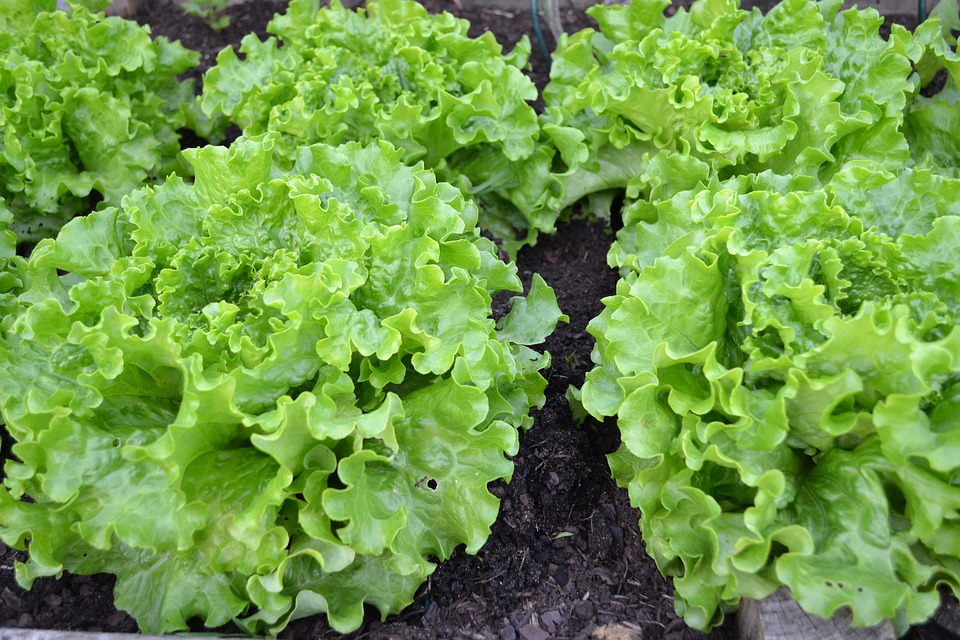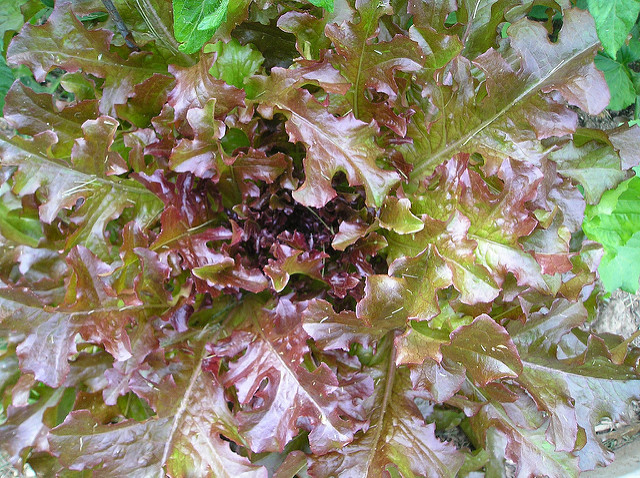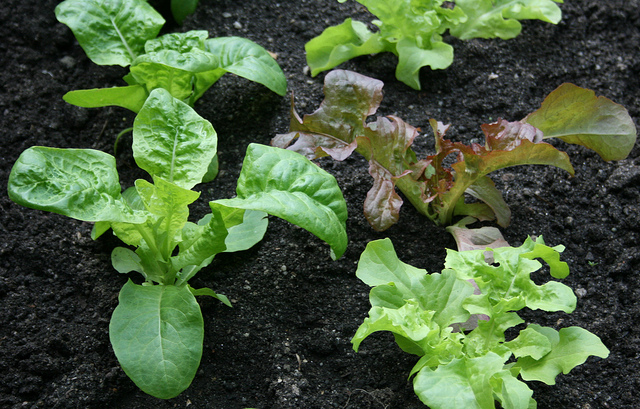Lactuca sativa

Growing your own lettuce is a great way of avoiding food waste, especially if you choose a loose-leaf variety that you can pull leaves off as you need them. This is perfect for lunches or for adding some more greens to the family meal. No more slimey greens in the bottom of the fridge.
When can I grow lettuce?
- Dry temperate regions: September to March
- Temperate & cool regions: September to March
- Warm temperate and sub-tropical regions: all year
- Semi-arid and arid regions: August to March
- Tropical regions: all year
Varieties of lettuce
The four main varieties of lettuce are:
- Hearting – has tight heads and slower maturing. The entire lettuce is harvested at once.
- Non-hearting – has loose bunches of leaves so can be harvested whole or as required. It has an increased tolerance to hot conditions.
- Butterhead – loose leaves with smooth leaves.
- Cos – narrow upright with midribs.
image: Flickr Cooper
Seeds or seedlings?
Seeds germinate easily but you can also grow lettuce from seedlings for a head start. If growing from seed don’t bury seeds too deep and mix with some clean sand if you have trouble handling small seeds.
Growing tips
- Prepare your soil with compost and well rotted manure (not fresh).
- Provide a soil pH between 6.5 to 7.5.
- Lettuce have shallow roots and it helps to mulch plants to maintain moisture.
- It’s best to water plants in the morning so the leaves are not left wet overnight.
- Lettuce can be grown in between slower growing crops.
- A fortnight application of compost tea or worm tea will help your lettuce grow.
- Daytime temperatures below 20 degrees are ideal for lettuce.
- Stress from lack of water will makes your lettuce bolt to seed and the leaves will also become bitter.
Grow lettuce in a container
Lettuce is a great vegetable to grow in a container. Just ensure it doesn’t dry out by watering adequately and providing some protection from the sun in hot weather. I like to inter-plant them with some small flowers such as violas which attract beneficial insects that reduce pests.
Rotate your crops
Crop rotation helps minimise soil borne pests and diseases, as well as keeping nutrient levels at an optimal level for plants. Generally lettuce is planted after a legume (peas and beans) crop.
Managing pests
Lettuce are susceptible to a few pests and diseases but are generally easy to grow. If you have trouble with slugs and snails try using physical barriers or beer traps. The best way of preventing mildew disease is to have adequate air circulation and not to water in the evening if the leaves won’t have time to dry off. A few caterpillars isn’t a problem, but if they are building up in numbers try making a soap spray.
Why is my lettuce bitter?
Lettuce becomes bitter when it is stressed from not having enough of the things it needs, usually water. This makes the plant bolt to seed, making the leaves taste pretty awful in the process.

image: Flickr Carrie
Harvesting
You will be able to harvest your lettuce after around 7 weeks, depending on your variety. If it’s a loose-leaf variety you can either harvest individual leaves as needed or use a knife to cut off the entire plant. Rinse leaves under water before eating and store any unused leaves in the refrigerator.
Where can I buy seeds?
Go to your local nursery or search for seed stores online. Try to buy seeds that have been grown in Australia. You could also join a local savers group.
Happy Gardening!

